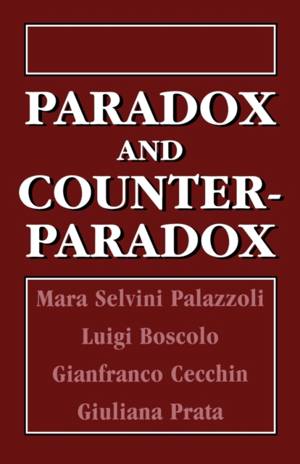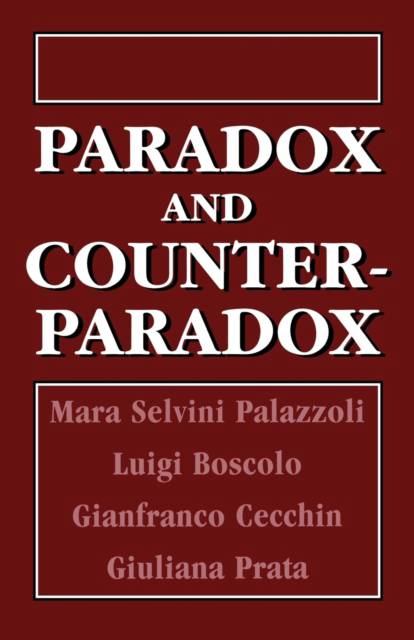
- Afhalen na 1 uur in een winkel met voorraad
- Gratis thuislevering in België vanaf € 30
- Ruim aanbod met 7 miljoen producten
- Afhalen na 1 uur in een winkel met voorraad
- Gratis thuislevering in België vanaf € 30
- Ruim aanbod met 7 miljoen producten
Zoeken
Paradox and Counterparadox
A New Model in the Therapy of the Family in Schizophrenic Transaction
Mara Selvini Palazzoli, Luigi Boscolo
Paperback | Engels
€ 125,45
+ 250 punten
Omschrijving
Paradox and Counterparadox introduces the English-speaking public to the first results of a research plan drawn up my the Milan Center for Family Studies at the end of 1971 and put into practice at the beginning of 1972. The book reports the therapeutic work carried out by the authors with fifteen families, five with children presenting serious psychotic disturbances, and ten with young adults diagnosed as schizophrenics in acute phase. The reader will recognize, in the cases presented, the stimulating originality and efficacy of this approach, one whose interest exceeds the purely clinical and which offers new points of departure for an ecologic vision of human relationships.
Specificaties
Betrokkenen
- Auteur(s):
- Uitgeverij:
Inhoud
- Aantal bladzijden:
- 202
- Taal:
- Engels
Eigenschappen
- Productcode (EAN):
- 9781568213057
- Verschijningsdatum:
- 1/08/1994
- Uitvoering:
- Paperback
- Formaat:
- Trade paperback (VS)
- Afmetingen:
- 137 mm x 208 mm
- Gewicht:
- 331 g

Alleen bij Standaard Boekhandel
+ 250 punten op je klantenkaart van Standaard Boekhandel
Beoordelingen
We publiceren alleen reviews die voldoen aan de voorwaarden voor reviews. Bekijk onze voorwaarden voor reviews.








